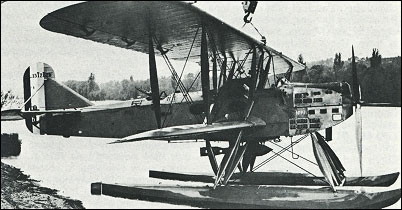 |
Levasseur PL 151932 |  |
| TORPEDO-BOMBER | Virtual Aircraft Museum / France / Levasseur |
 |
The prototype Levasseur PL 15 twin-float biplane flew for the first time with temporary wheel landing gear in October 1932. A production order for 16 aircraft as PL 15 T2B2b followed, these entering service from 1934 onwards with navy Escadrille 7B2 aboard the seaplane-carrier Commandant Teste. By comparison with the earlier PL 14, the PL 15 had a redesigned slender fuselage without the 'avion marin' type hull. Power was provided by a 485kW Hispano-Suiza 12Nbr engine, and the wings folded for storage aboard ship. Surviving PL 15s, taken out of service at the end of 1938, formed Escadrille 3S6 for anti-submarine patrol along the Atlantic coast from September 1939 onwards. The PL 15 was armed with two 7.5mm machine-guns, and a torpedo or up to 450kg of bombs. The PL 15 was developed into the PL 151, a mid-wing monoplane with a small stabilising plane mounted over the fuselage. A full-scale mock-up was built, but no further development was undertaken. The PL 154, converted from the fourth PL 15, was a three-seat landplane torpedo-carrier which was abandoned after limited test flying. Later designs included the unusual PL 200 monoplane, intended as an advanced reconnaissance seaplane, with a shoulder-wing mounted on a short nacelle for the three crew members, at the front of which was the 537kW Hispano-Suiza 9Vbrs radial engine. Test-flown in February 1935, the PL 200 achieved a maximum speed of 225km/h by comparison with the 208km/h of the production PL 15. It was re-engined with a 552kW Gnome-Rhone 9Kfr engine in October 1935 as the PL 201, but development was abandoned soon afterwards
|  COMPANY PROFILE | ||||||
 |

|
